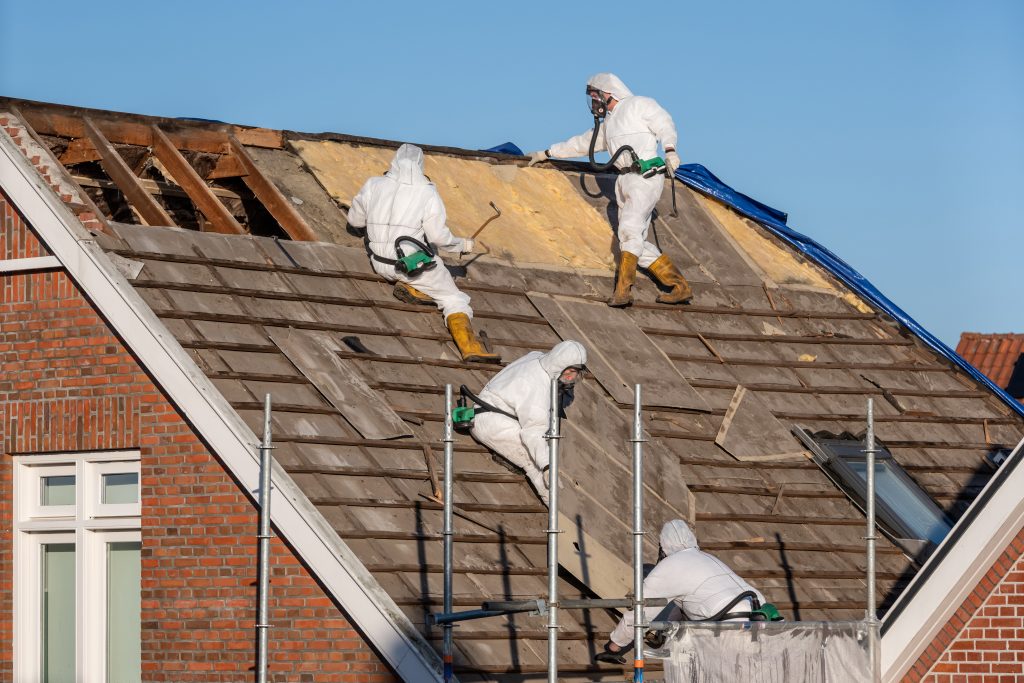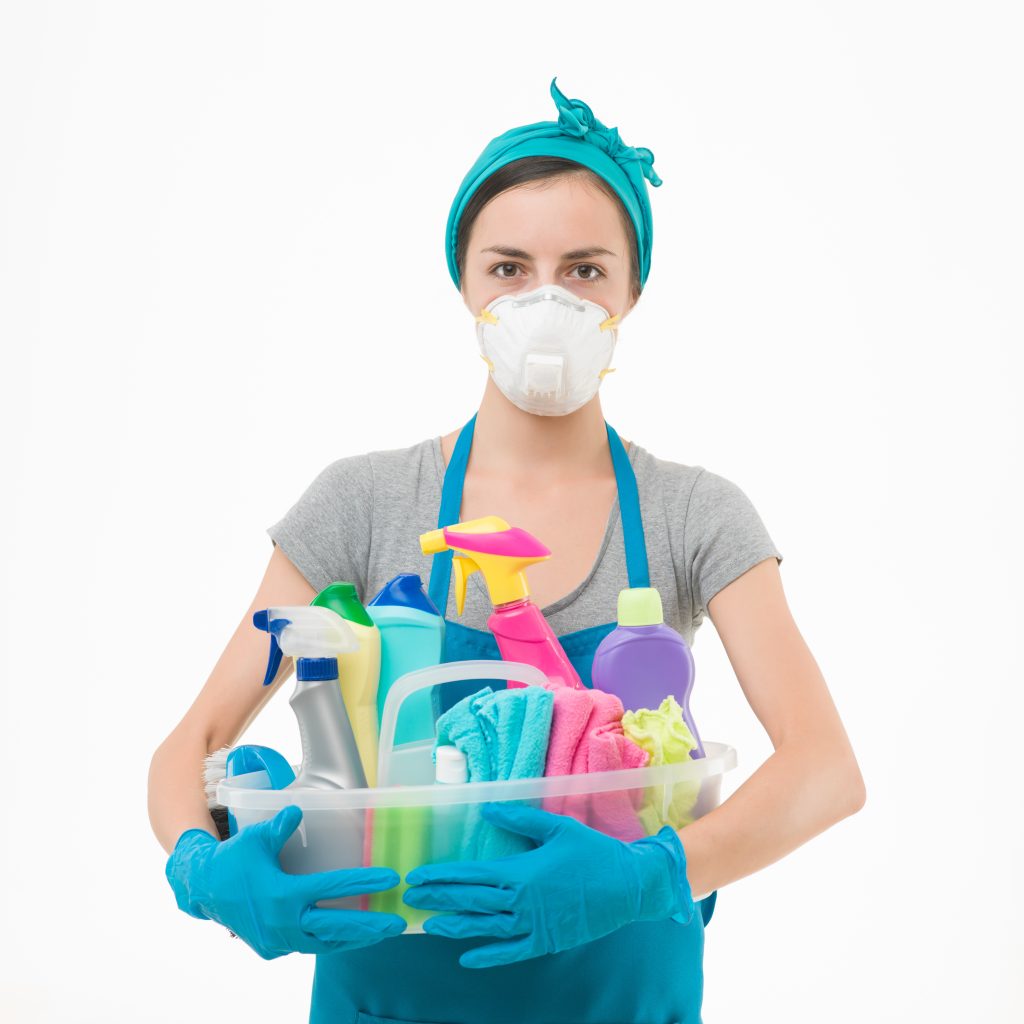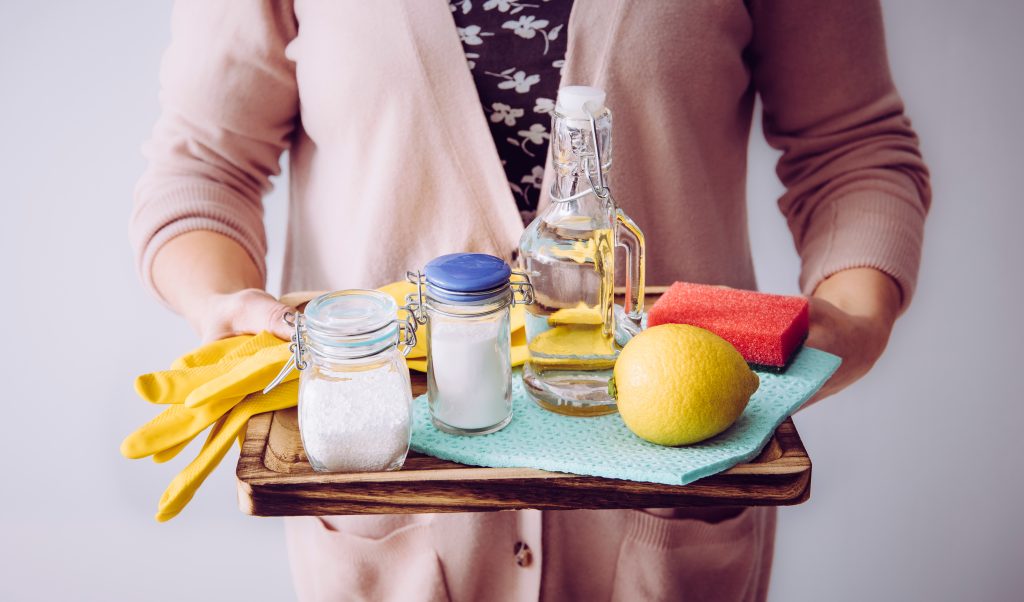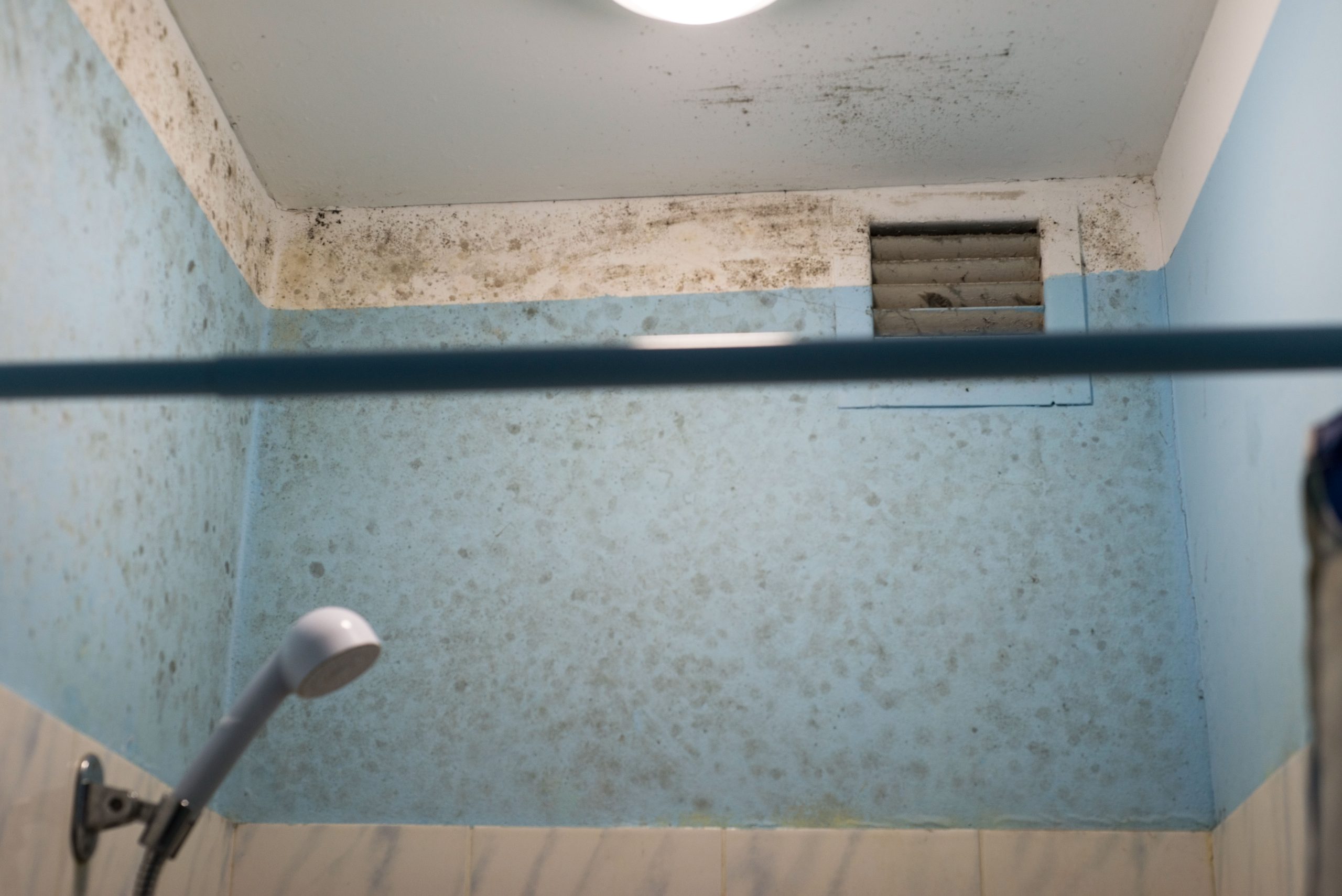Toxins In Your House Are Making You Sick – How To Deal With Indoor Pollutants
There are dangerous toxins in your house that are making you sick. These toxins are often invisible and odorless, making them difficult to detect. Let’s discuss common household toxins and how they affect your health. Additionally, let’s look at how to deal with indoor pollutants so your home is a safe haven, providing you with comfort and protection from the outside world.
Toxins In Your House Are Making You Sick – Lead And Asbestos
If you live in an old house, lead and asbestos are a huge concern, as they have been linked to serious health issues. Lead was used in paint, batteries, gasoline, and even some types of pottery. Prolonged exposure to lead has severe health consequences, especially for young children and pregnant women.
The most common way for people to come into contact with lead is through ingestion or inhalation of lead-containing substances. This can happen through contaminated water, dust from deteriorating paint, or even soil in areas where lead-based pesticides were once used.1
Read more about the toxic effects of lead.
Asbestos is a naturally occurring mineral that was commonly used in construction materials due to its strength and fire-resistant properties. It can be found in products such as insulation, roofing tiles, and flooring. While it was once thought to be a safe material, it has since been discovered that prolonged exposure to asbestos can cause serious health issues.
When asbestos fibers are disturbed, they become airborne and easily inhaled into the lungs. This can lead to a variety of respiratory issues such as coughing, shortness of breath, and mesothelioma.2
Asbestos is most commonly found in older homes, as it was widely used in construction materials until the late 1970s. If these materials begin to deteriorate or are disturbed during renovations or repairs, it poses a serious risk to those living in the home.3

Toxins In Your House Are Making You Sick – Mold
Mold thrives on moisture, making it a common problem in bathrooms, basements, and areas affected by flooding or leaks. While mold may seem harmless at first glance, the truth is that it can pose serious health risks. Mold produces tiny particles called mycotoxins which are responsible for the adverse health effects.
When mold spores are present in the air, they can easily be inhaled into your lungs. This often leads to a range of health issues, especially for those who are sensitive or allergic to mold. Some common symptoms of mold exposure include coughing, wheezing, throat irritation, and eye irritation. Long-term exposure to mold may also lead to chronic respiratory issues and allergies. In more severe cases, mold exposure can even trigger asthma attacks or cause respiratory infections.
In addition to respiratory issues, mold exposure has also been linked to neurological symptoms such as headaches, dizziness, and memory loss. It’s important to note that the severity of these symptoms can vary depending on the individual’s sensitivity and the amount of mold present in their environment.4
Read more about the toxic effects of mold.
Toxins In Your House Are Making You Sick – Radon
Radon is a colorless and odorless gas that can be found in nature, but it can also be present in your home. It is formed from the natural breakdown of uranium in soil, rock, and water. When radon seeps into your home through cracks in the foundation or other openings, it can build up to dangerous levels. Exposure to high levels of radon leads to serious health problems and many people die each year in the United States from radon-related illnesses.5
Toxins In Your House Are Making You Sick – Furniture And Building Materials
Many modern pieces of furniture are made with synthetic materials that are treated with chemicals such as formaldehyde, which is known to be a carcinogen. These chemicals off-gas and release toxic fumes into your home, contributing to poor indoor air quality.6
In addition, many building materials used in the construction of homes, such as paints, adhesives, and sealants, also contain harmful chemicals that can emit volatile organic compounds (VOCs) into the air. These VOCs cause a variety of health issues, from respiratory problems to neurological disorders.7
Toxins In Your House Are Making You Sick – Cleaning Products
Many household cleaning products contain a variety of chemicals, including ammonia, bleach, and phthalates. These chemicals cause a range of health problems, from minor irritations to more serious conditions like autoimmune diseases.8
Ammonia is commonly found in window cleaners and bathroom cleaners. Exposure to high levels of ammonia irritates the respiratory system, leading to coughing, shortness of breath, and even asthma attacks. Long-term exposure to ammonia has also been linked to kidney and liver damage.9
Bleach is a strong disinfectant commonly found in all-purpose cleaners and laundry detergents. While bleach is effective at killing germs, it can also cause skin and eye irritation and even burn the mucous membranes in our respiratory tract. Prolonged exposure to bleach fumes may also lead to lung damage.10
Phthalates are chemicals often used as fragrances or softeners in cleaning products. These chemicals have been linked to hormonal imbalances, which can affect reproductive health, as well as respiratory problems and allergies.11
Read more about the toxins in cleaning products.

Toxins In Your House Are Making You Sick – Dust Mites
Dust mites are one of the most common allergens found in households. These microscopic creatures live in dust and feed on dead skin cells, making them incredibly resilient and difficult to eliminate completely. While they may not pose a direct threat to humans, their feces and body fragments can trigger allergic reactions and exacerbate respiratory issues such as asthma.
Toxins produced by dust mites can also aggravate eczema and dermatitis, causing skin irritation and inflammation. In addition to their direct impact on human health, dust mites can also attract other pests such as cockroaches and rodents, which carry their own set of harmful bacteria and toxins.12
How To Deal With Indoor Pollutants – Stick To A Regular Cleaning Schedule
Regular cleaning of your home is essential for maintaining good indoor air quality. Dust and vacuum regularly to remove any accumulated pollutants. In addition to dust mites, dust contains a variety of substances that can negatively impact our health, such as pet dander, pollen, and mold spores. Vacuuming with a HEPA filter effectively removes these particles from carpets and hard surfaces.
How To Deal With Indoor Pollutants – Adequate Air Flow and Ventilation
Even with the best cleaning practices, indoor pollutants will still accumulate in our homes. To combat these indoor pollutants, it is important to ensure adequate air flow and ventilation in your home. The simplest way to increase airflow in your home is to open windows and doors. This allows for fresh air from outside to circulate inside, pushing out stagnant air and pollutants. It is especially beneficial to do this when cooking, cleaning, or using chemical products.
How To Deal With Indoor Pollutants – Air Purifier
Air purifiers are designed to filter out airborne pollutants and improve indoor air quality. They work by drawing in air, trapping pollutants, and releasing clean air back into the room. A 0.3 micron HEPA filter is designed to trap and remove particles that are as small as 0.3 microns in size, making them incredibly effective at capturing dust, pollen, pet dander, and other airborne allergens.
Remember that filters in your HVAC system, air purifiers, and dehumidifiers need to be cleaned or replaced regularly to ensure proper functioning. Clogged filters can restrict air flow, allowing pollutants to build up in your home.13
How To Deal With Indoor Pollutants – Maintain Ideal Humidity Levels
In areas where there is high moisture content, such as the bathroom and kitchen, it is important to have exhaust fans installed. These fans help to remove excess humidity which can lead to mold growth. They also help to eliminate odors and pollutants from these areas.14
How To Deal With Indoor Pollutants – Eco-Friendly Cleaning Products
Use natural cleaning products or those with a low chemical content to minimize the release of harmful chemicals into the air. When purchasing cleaning products, it’s essential to read labels carefully. Look for products that are labeled “environmentally safe” or “environmentally friendly.” These products are made with natural ingredients and are free from harsh chemicals.
Baking soda is an excellent alternative to traditional cleaners, as it has many cleaning properties. It can be used for scrubbing surfaces, absorbing odors, and even whitening laundry. Plus, it’s non-toxic and safe to use around children and pets.
White vinegar is another versatile and eco-friendly cleaning product that can be used to remove dirt, grime, and mineral build-up. It’s also a natural disinfectant, making it perfect for cleaning surfaces in the kitchen and bathroom.
Essential oils not only smell good but also have natural cleaning properties. Some essential oils, such as tea tree oil and lemon oil, have antibacterial and antiviral properties, making them great for disinfecting surfaces.
If you want to take your eco-friendly cleaning to the next level, try making your own cleaners using simple ingredients like vinegar, baking soda, and essential oils. There are many recipes available online, and they are easy to make, cost-effective, and safe for your health and the environment.

Toxins In Your House Are Making You Sick – How To Deal With Indoor Pollutants
We may not be able to completely eliminate toxins from our homes, but by being aware of their presence and taking necessary precautions, we can greatly reduce the negative impact they have on our health. By choosing natural or eco-friendly products, maintaining a clean and well-ventilated home, and regularly testing for potential hazards, we can create a healthier living environment for ourselves and our families.
Read more about other common toxins we are exposed to regularly.
References
1 Halmo L, Nappe TM. Lead Toxicity. [Updated 2023 Jul 4]. In: StatPearls [Internet]. Treasure Island (FL): StatPearls Publishing; 2023 Jan-. Available from: https://www.ncbi.nlm.nih.gov/books/NBK541097/
2 Pira E, Donato F, Maida L, Discalzi G. Exposure to asbestos: past, present and future. J Thorac Dis. 2018 Jan;10(Suppl 2):S237-S245. doi: 10.21037/jtd.2017.10.126. PMID: 29507791; PMCID: PMC5830559.
3 Govorko MH, Fritschi L, White J, Reid A. Identifying Asbestos-Containing Materials in Homes: Design and Development of the ACM Check Mobile Phone App. JMIR Form Res. 2017 Dec 14;1(1):e7. doi: 10.2196/formative.8370. PMID: 30684427; PMCID: PMC6334671.
4 Kraft S, Buchenauer L, Polte T. Mold, Mycotoxins and a Dysregulated Immune System: A Combination of Concern? Int J Mol Sci. 2021 Nov 12;22(22):12269. doi: 10.3390/ijms222212269. PMID: 34830149; PMCID: PMC8619365.
5 Kang JK, Seo S, Jin YW. Health Effects of Radon Exposure. Yonsei Med J. 2019 Jul;60(7):597-603. doi: 10.3349/ymj.2019.60.7.597. PMID: 31250572; PMCID: PMC6597470.
6 National Research Council (US) Committee on Toxicology. Formaldehyde – An Assessment of Its Health Effects. Washington (DC): National Academies Press (US); 1980. EFFECTS ON HUMANS. Available from: https://www.ncbi.nlm.nih.gov/books/NBK217652/
7 Alford KL, Kumar N. Pulmonary Health Effects of Indoor Volatile Organic Compounds-A Meta-Analysis. Int J Environ Res Public Health. 2021 Feb 7;18(4):1578. doi: 10.3390/ijerph18041578. PMID: 33562372; PMCID: PMC7914726.
8 Garza JL, Cavallari JM, Wakai S, Schenck P, Simcox N, Morse T, Meyer JD, Cherniack M. Traditional and environmentally preferable cleaning product exposure and health symptoms in custodians. Am J Ind Med. 2015 Sep;58(9):988-95. doi: 10.1002/ajim.22484. Epub 2015 Jun 4. PMID: 26040239; PMCID: PMC4976595.
9 Toxicological Profile for Ammonia. Atlanta (GA): Agency for Toxic Substances and Disease Registry (US); 2004 Sep. 3, HEALTH EFFECTS. Available from: https://www.ncbi.nlm.nih.gov/books/NBK598714/
10 Benzoni T, Hatcher JD. Bleach Toxicity. [Updated 2023 Jun 26]. In: StatPearls [Internet]. Treasure Island (FL): StatPearls Publishing; 2023 Jan-. Available from: https://www.ncbi.nlm.nih.gov/books/NBK441921/
11 Wang Y, Qian H. Phthalates and Their Impacts on Human Health. Healthcare (Basel). 2021 May 18;9(5):603. doi: 10.3390/healthcare9050603. PMID: 34069956; PMCID: PMC8157593.
12 Aggarwal P, Senthilkumaran S. Dust Mite Allergy. [Updated 2023 Aug 8]. In: StatPearls [Internet]. Treasure Island (FL): StatPearls Publishing; 2023 Jan-. Available from: https://www.ncbi.nlm.nih.gov/books/NBK560718/
13 Li L, Zheng Y, Ma S. Indoor Air Purification and Residents’ Self-Rated Health: Evidence from the China Health and Nutrition Survey. Int J Environ Res Public Health. 2022 May 23;19(10):6316. doi: 10.3390/ijerph19106316. PMID: 35627853; PMCID: PMC9141498.
14 Arundel AV, Sterling EM, Biggin JH, Sterling TD. Indirect health effects of relative humidity in indoor environments. Environ Health Perspect. 1986 Mar;65:351-61. doi: 10.1289/ehp.8665351. PMID: 3709462; PMCID: PMC1474709.




